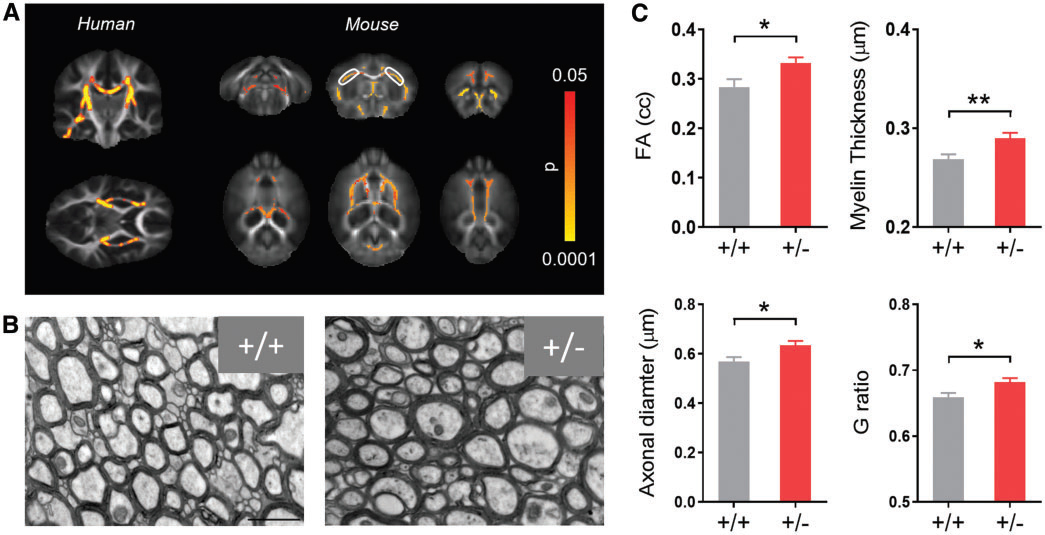
Brain, May 2018
Autism-associated 16p11.2 microdeletion impairs prefrontal functional connectivity in mouse and human.
Bertero A 1,2 , Liska A 1 , Pagani M 1 , Parolisi R 3 , Masferrer ME 4 , Gritti M 5 , Pedrazzoli M 5 , Galbusera A 1 , Sarica A 6 , Cerasa A 6,7 , Buffelli M 8 , Tonini R 5 , Buffo A 3 , Gross C 4 , Pasqualetti M 1,2 , Gozzi A 1 .
Recent human genetic studies indicate that different variants increase risk for neurodevelopmental disorders. However, it remains unclear how specific mutations impact brain function and contribute to neuropsychiatric risk.
In this study, we focused our attention on chromosome 16p11.2 microdeletion, one of the most common copy number variations in autism and related neurodevelopmental disorders. Using resting state functional MRI data, our collaborators showed that 16p11.2 microdeletion carriers exhibit impaired prefrontal connectivity, associated with socio-cognitive impairments. To corroborate human findings, they probed prefrontal connectivity and microstructural white integrity in a mouse model of 16p11.2 deletion by MRI and DTI. Our contribution concerns the electron microscopy analysis of myelin that revealed an increased axonal diameter in callosal fibers as a possible cellular correlate of these alterations
These results suggest that 16p11.2 microdeletion can predispose to neurodevelopmental disorders and cognitive disability through a dysregulation of prefrontal connectivity.








